
Aventurine Stone: History, Meaning, Uses & More
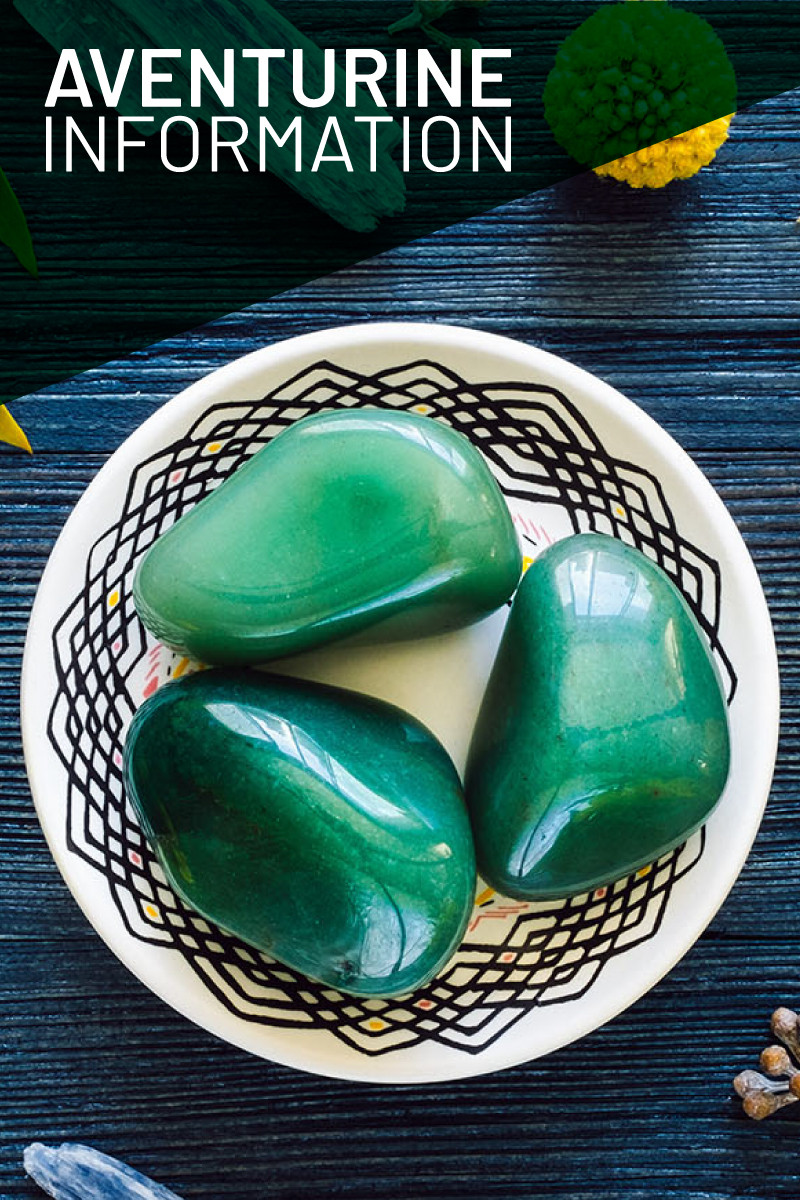 If you’re looking for a unique, captivating stone with incredible healing power, allow us to introduce the aventurine stone. This stone of prosperity can unlock success and abundance for anyone. But what is aventurine? And while we’re on the subject: what is aventurine good for in your daily life?
If you’re looking for a unique, captivating stone with incredible healing power, allow us to introduce the aventurine stone. This stone of prosperity can unlock success and abundance for anyone. But what is aventurine? And while we’re on the subject: what is aventurine good for in your daily life?
Aventurine is a unique variety of quartz known for its signature shimmer. This gorgeous glow makes aventurine perfect for everything from ornamental carvings to faceted jewelry.
Today, we’ll guide you through all the aventurine stone specifications you need to know. Along the way, you’ll learn how aventurine benefits can infuse tranquility and luck into your life.
Ready to learn what makes aventurine shine? Let’s get started!

What Is An Aventurine Stone?
Aventurine is a silicate gemstone that comes in many colors but is most often green. You may see the term "aventurine feldspar," but this is a trade name for sunstone, a plagioclase feldspar mineral.
Can’t get enough sparkle? Well, the main aventurine property is its shimmer. Tiny, sparkling inclusions create a glittering effect called aventurescence.
Aventurine is the zodiac stone for a few signs but above all Taurus. Aventurine’s money manifesting properties are perfect for the frugal, security-driven Taurus. With this soothing green stone in hand, the Taurus can unplug from their stressful work every once in a while.
Now that you have a little overview of aventurine, let’s dig deeper into its specifications.
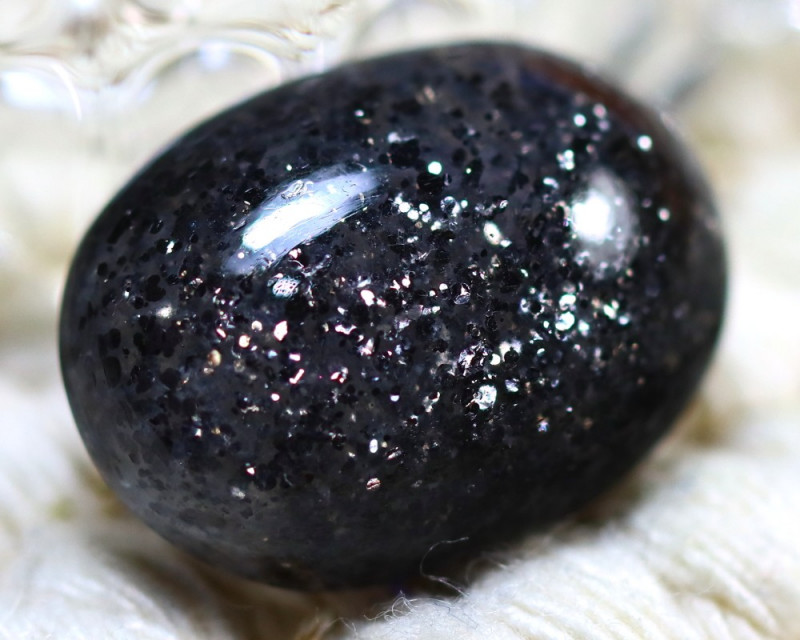
Aventurine Specifications & Characteristics
As we’ve mentioned, aventurine stones are made up of quartz. The specific type of quartz in aventurine is chalcedony, a microcrystalline form of silica. Most aventurine is actually a type of quartzite, a rock mostly composed of tiny, compact quartz grains. Despite not being a mineral, quartzite is often considered a quartz variety.
In terms of durability, aventurine ranks between 6.5 to 7 on the Mohs scale of mineral hardness. Most quartz stones sit at a solid 7. However, the presence of mica-mineral inclusions – which ranks from2-3 on their own – slightly brings aventurine’s hardness down. Even so, aventurine is still tougher than steel, glass, and titanium!
Colors: Usually green. Also orange, yellow, red, pink, N, white, brown, blue, gray
Crystal structure: Trigonal (sub-group of hexagonal)
Luster: Vitreous, waxy, and aventurescent
Transparency: Slightly translucent to opaque
Refractive index: 1.54-1.55
Density: 2.64 to 2.69
Cleavage: None or indiscernible
What about aventurine’s gemological properties?
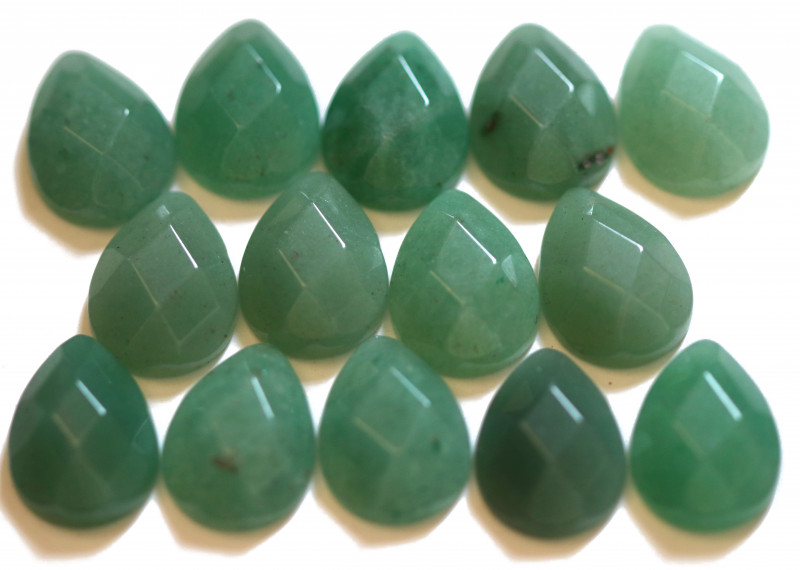
Aventurine Gemstone Properties
As we’ve mentioned earlier, aventurines make stunning bracelets or necklaces – but why? How can certain qualities like color, clarity, and cut help us pick out the perfect aventurine jewelry?
Let’s jump into color first.
Color
English artist David Hockney once said, “I prefer living in color.” Feel the same? Then you’ll love aventurine's vast range of colors.
Aventurine colors include blue, yellow, orange, brown, gray, peach, and even silver. The most common color, however, is green.
Aventurine’s gleaming green tones result from an inclusion called fuschite, a chromium-rich variety of mica. The more fuschite an aventurine has, the more opaque and richer its saturation will be.
Aventurine is well known for its distinct metallic sparkle as well. This glimmering quality is known as aventurescence and comes from mineral platelet inclusions. With enough aventurescence, aventurine’s color can change entirely!
Another quality of aventurine is color banding or color zoning. Because inclusions vary from stone to stone, a piece of aventurine could be darker in some areas while lighter in others.
Speaking of inclusions, let’s get into aventurine clarity.
Clarity
As one of the 4 C’s of gemstone grading, clarity plays a critical role in determining a jewel’s value. Gemologists and jewelers determine clarity based on fractions, blemishes, and most importantly, inclusions.
Colored gemstones belong to one of three clarity types established by the Gemological Institute of America (GIA.) Aventurine has Type II clarity, meaning it usually has a few visible inclusions.
As we’ve mentioned before, inclusions can heavily impact aventurine’s appearance and even its color.
Here are the most common minerals whose inclusions affect aventurine color:
Fuchsite. Fuschite (a chromium mica mineral) gives aventurine an icy green or blue color. However, too much fuschite, upwards of 10-20%, can cause cleavage, or splitting, in the stone.
Hematite. Hematite inclusions infuse aventurine with autumn-like colors of reddish or golden brown.
Goethite. Aventurines with goethite inclusions appear greenish-brown or orange.

Cut
Because of its opacity and aventurescence, aventurine cuts go beyond just jewelry. Typically, green aventurine becomes cabochons or beads for stringing necklaces and bracelets.
Cabochons are stones that have been cut to have a flat base and rounded top. They’re polished but not faceted, making them great for meditation or carrying around. Most cabochons are cut from opaque or shimmery stones like aventurine.
Aventurine is also popularly used in vases, bowls, and other ornamental objects. Not only is aventurine durable, but it can also be easily shaped and cut. Carvings are quite popular. These carvings usually consist of animals or other figurines.
If you like traditional cuts, though, don’t worry! Aventurine also comes in classic cuts like rounds, cushions, pear cuts, and marquise cuts.
Besides traditional cuts, traditions involving aventurine span back hundreds, even millions, of years. Travel back in time with us as we go over aventurine’s history.
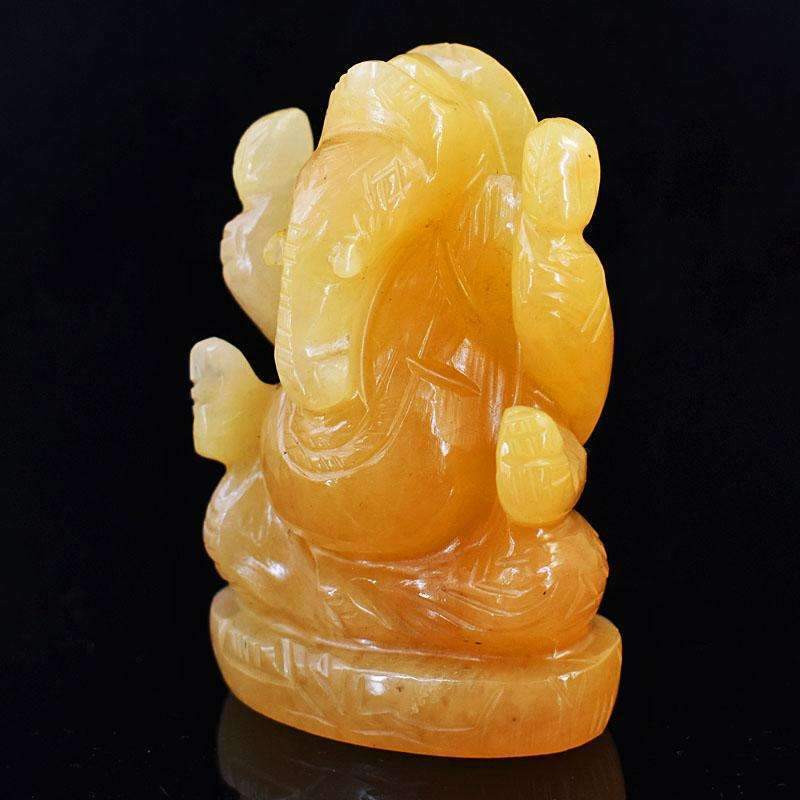
Aventurine History and Myths
Aventurine’s name comes from the Italian phrase a ventura, which means “by chance.” Ever heard of aventurine glass from Venice? In case you haven’t, let’s have a quick storytime!
In the 1700s, a workman in Murano accidentally put copper fillings into the molten “metal” he was working with. This new material was then sold as avventurino or avventurina. This material wasn’t aventurine (it was goldstone), but aventurine got the name because it looked incredibly similar.
Legends associated with aventurine span back much further than the 16th century, however.
Aventurine Legends
In the Ethiopian Oma Valley, talismans, beads, and tools that date back over two million years were made out of aventurine. Some believe these were among the first tools made by man.
Other ancient practices have also utilized aventurine, like medicine wheel rituals. During ceremonial rituals, people would gather around a wheel and each person held an aventurine stone to their heart. They believed that the gem would connect them to their spirit guides.
Speaking of spirit guides, aventurine was seen as a connection to higher powers in many cultures.
In Ancient China, aventurine represented the Buddhist divinity of mercy and compassion, Kuan-Yin. The Ancient Greeks and Celts associated aventurine with their own goddesses of fertility and nature, Fidais and Dione.
Aventurine’s metaphysical properties have also given it a place in many societies over time.
Historical Uses of Aventurine
Ancient Tibetans believed aventurine could improve creativity and nearsightedness. They even put the stone on the eyes of their statues to give them more visionary powers, or the ability to bring creative energy into dreams and desires.
Have you ever heard of the Amazonians? They were a race of women honored in ancient Greek myths and known for being fierce, independent warriors. Until the 1800s, aventurine was called the “stone of the Amazonians.” These warriors used the gem as talismans or breastplate adornments.
We’ve covered this green gem’s exciting history, but where does aventurine come from?

Aventurine Stone Origins and Sources
Aventurine stones like to stick together. They usually form in sedimentary deposits, and over time the grains cement together to form sandstones.
While the rock surrounding these deposits wears away – whether from heat, pressure, or the elements – the quartz grains stay. They liquefy and combine with other minerals, like fuschite, and end up with a whole new look.
So after all this, who digs up and finds these crystals?
Aventurine Mining Locations
Aventurine deposits are all over the world. In Asia, aventurine mines exist in India, Russia, and China. Over in Europe, aventurine comes from Austria and Spain. In the Americas, Brazil, Chile, Canada, and the US are home to aventurine deposits.
The two most abundant producers of aventurine are India and Brazil. Most of the popular green aventurine comes from India, so much so that aventurine is often referred to as “Indian Jade.”
Other countries produce different colors of aventurine. For instance, Chile, Russia, and Spain boast aventurine in shades of white, gray, and orange.
While only some aventurine comes from the US – specifically Rutland, Vermont – Canada is rich with these jewels.
In McLaren’s Bay, a huge table of aventurine emerged after billions of years underground. The unique McLaren aventurine stones at this mine include green, black, and even red hues. What’s even more unusual is that some of their stones are multi-colored!
Enchanted yet? Let’s delve into the magic behind aventurine properties.
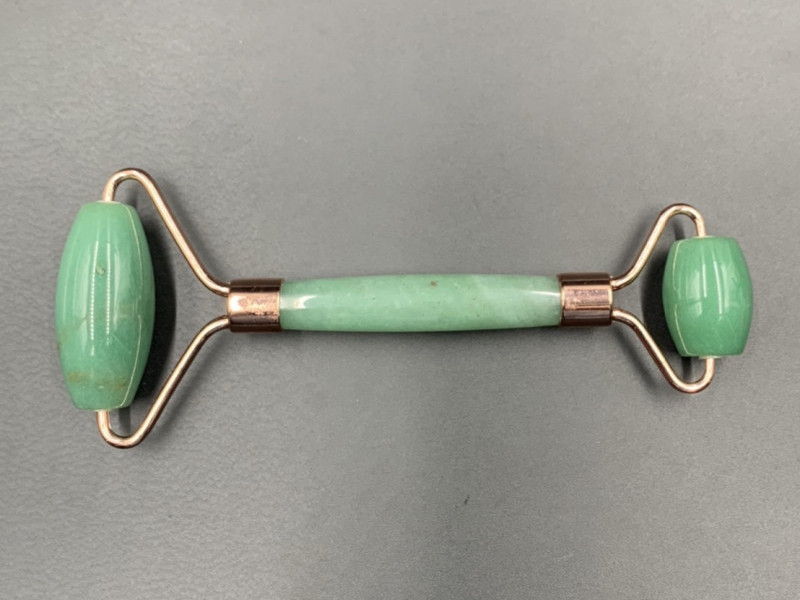
Aventurine Stone Meaning
What does the aventurine stone symbolize? And what is an aventurine stone good for, anyway?
Aventurine symbolizes good luck, inner peace, and creative inspiration. Known as the “Stone of Opportunity,” aventurine is a good luck gem that can help you manifest wealth and satisfaction.
Ever bought a lottery ticket? Some say that carrying a green aventurine stone in your left pocket can help you win the big pot of gold!
Another aventurine stone benefit is serenity. Feeling stressed and overwhelmed? Hold an aventurine stone while you meditate for a few minutes. As you let the soothing vibrations wash over you, you’ll start to feel a greater sense of well-being and peace.
As we’ve mentioned earlier, Tibetans believed aventurine could improve creativity. Well, they were right! The aventurine stone can benefit artists and creators, giving them the courage and confidence to put their passion out into the world.
What’s next? Let’s explore the various aventurine stone uses for healing and what aventurine does spiritually.

Aventurine Spiritual and Healing Properties
As we’ve already covered, aventurine is a type of quartz, and clear quartz is the “Master Healer” of gemstones.
Well, it lends this healing power to aventurine, too. If the clear quartz energy is too much for you, though, you’ll love the gentle nature of aventurine’s healing properties.
For physical healing, aventurine benefits connect to the heart and eyes.
This gemstone may aid circulatory health, heart disorders, and vision problems. Holding a cold piece of aventurine to your temple can cure headaches.
In terms of spiritual healing, aventurine is tied to the chakras. The chakra system is an ancient model of energy centers that connect your physical and spiritual health. Aventurine activates the heart and throat chakras.
The heart chakra is at the center of your chest, aligned with the heart. Aventurine can help open your heart chakra, making you feel more compassionate and loving.
The throat chakra is at the dip of your collarbone. Aventurine’s creative energy can open this chakra, letting you feel centered and inspired.
So, you know how an aventurine can take care of you. But how do you take care of aventurine?

Aventurine Care and Maintenance
Although aventurine is pretty durable, you’ll still want to take good care of it. Here are our tips for aventurine care that’ll give your gem the longevity it deserves.
Keep your aventurine away from harsh chemicals, exposure to heat, and gem types that are harder than quartz. These include any stones in the corundum family, like sapphire and ruby, and the beryl family, like emerald and aquamarine.
When you’re not using it, we recommend keeping your aventurine gem in a dark place like a soft pouch or jewelry box.
You’ll also want to keep that gem sparkling. So how do you clean aventurine?
Follow these steps:
First, gather your materials: unscented soap, warm water, and a bowl.
In the bowl, mix your warm water and soap.
Place aventurine in the water and use your hands or a soft brush to gently scrub away any dirt or debris.
Rinse away all the soap residue and dry with a cotton or microfiber cloth.
Setting up a cleaning routine once a month will keep your gems in tip-top shape and retain their value. So, what is an aventurine stone worth?
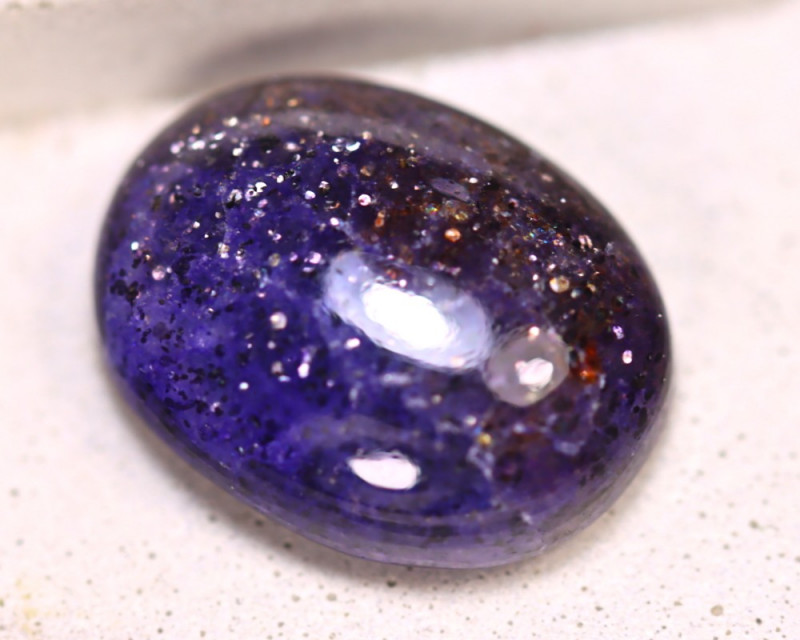
Aventurine Prices and Value
Aventurine stone prices are very affordable, especially compared to other popular green gems like jade or emerald.
Green aventurine can range from $3-$30 per carat. However, most aventurine gems, especially at wholesale, are between $3-$4 per carat.
Cabochons are one of the most popular forms of aventurine sold. These typically cost between $0.15-$0.26 per gram ($0.03-$0.05 per carat).
Prefer all-natural raw crystals? Rough aventurine sells for about $7-$15 per pound ($0.01-$0.03 per gram).
Some aventurine is more valuable than others. For instance, stones with higher aventurescence command higher prices. Rare colors of aventurine are also more valuable, as they’re harder to come by.
At the end of the day, it's best to choose an aventurine gem that resonates with you. With such a diverse price range, you’re sure to find a jewel that fits your personality and budget!

Looking for Luck? Buy Aventurine Today!
And that brings us to the end of our guide! Now that you know everything about aventurine stones, you can see why these gems shine in so many ways. Underneath their glimmering surface lies the power to unlock creativity and abundance.
From the discovery that gave the aventurine stone its name to the opportunities it can bring to your life, this green gem definitely has a lucky streak.
As the Indian actress, Preity Zinta, once said, “Luck always favors the brave… Brave are the people who follow their heart; brave are the people who take chances in life.”
If you’re ready to follow your heart and courageously embrace success, aventurine is the way to go. At the very least, you’ll have a dazzling gemstone in your pocket!
Ready to find your lucky crystal? Shop for aventurine stones today!
Search the Gemstone Encyclopedia
Related Auctions
Related Articles
Originally the Birthstones or gemstones were associated with a zodiac sign or the month of a individuals birth. Find out what your stone is and view the stones we have for sale
8th Feb 2021
There are dozens of quartz and chalcedony gems with various colors and patterns. Learn all about quartz properties and every type of quartz, from amethyst and agate to plasma and phantom quartz!
15th Oct 2020
Hackmanite is a pink to violet sodalite gem known for its unique color-change and luminescence. Learn why hackmanite is special, from its rare qualities to the types of hackmanite jewelry available.
28th Mar 2018
Latest Articles
Friedelite is an uncommon pink, red, or brown manganese silicate mineral best known from New Jersey and South Africa. Learn the prices, properties, uses, and history of friedelite gemstones.
23rd Dec 2024
Shortite is a rare mineral and rarer gemstone, usually found as colorless or yellow wedge-shaped crystals. Learn the value, history, and properties of shortite in this guide!
9th Dec 2024
Senarmontite is an uncommon antimony mineral mostly used industrially but occasionally collected as rare gems or pearly crystals. Find out all of the traits, uses, prices, and history of senarmontite.
27th Nov 2024
Article Categories
How To's is where you will find helpful articles from gem Rock Auctions on how to cut gemstones, select gemstones and buy gemstones.
9 Articles





